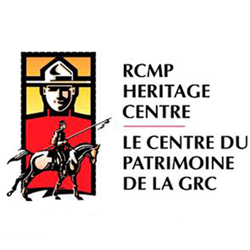Irena Sendler: Story of Courage In Face Of War
In today’s society, our youth are primarily concerned with stylish clothes, popular music, comfortable lifestyle and themselves.
It is important that our youth look to the recent past to see examples of personal sacrifices and commitment to aid the less fortunate.
AMAZING STORY
One such person was Irena Sendler. She was born in Warsaw Poland on February 15, 1910 and was a member of the Catholic church. Her father was a doctor and who died in the typhus epidemic of 1917 when caring for poor Jewish people in Otwock Poland.
At the outbreak of World War II, the Germans invaded Poland and quickly established the Warsaw Ghetto to house all the Jewish Poles. The city became a barricaded compound with access limited by the German Army.
At the time of the invasion, Irena Sendler was a Polish social worker who passed herself off as a nurse to sneak supplies and aid into the Warsaw Ghetto, and the punishment she endured when she was finally caught by the Nazis.
On May 12, 2008, Irena Sendler passed away in Warsaw at the age of 98. Shortly thereafter, her obituary appeared in the Los Angeles Times and highlighted her contributes to humanity and sacrifices:
She studied at Warsaw University and was a social worker in Warsaw when the German occupation of Poland began in 1939. In 1940, after the Nazis herded Jews into the ghetto and built a wall separating it from the rest of the city, disease, especially typhoid, ran rampant. Social workers were not allowed inside thte ghetto, but Sendler, imagining ‘the horror of life behind the walls,’ obtained fake identification and passed off as a nurse, allowed to bring in food, clothes and medicine.
By 1942, when the deadly intentions of the Nazis had become clear, Sendler joined a Polish underground organization, Zegota. She recruited 10 close friends – a group that would eventually grow to 25, all but one of them women – and began rescuing Jewish children.
She and her friends smuggled the children out in boxes, suitcases, sacks and coffins, sedating babies to quiet their cries. Some were spirited away through a network of basements and secret passages. Operations were timed to the second. One of Sendler’s children told of waiting by a gate in darkness as a German soldier patrolled nearby. When the soldier passed, the boy counted to 30, then made a made dash to the middle of the street, where a manhole cover opened and he was taken down into the sewers and eventually to safety.
Most of the children who left with Sendler’s group were taken into Roman Catholic convents, orphanages and homes and given non-Jewish aliases. Sendler recorded their true names on thin rolls of paper in the hope that she could reunite them with their families later. She preserved the precious scraps in jars and buried them in a friend’s garden.
In 1943, she was captured by the Nazis and tortured but refused to tell her captors who her co-conspirators were or where the bottles were buried. She also resisted in other ways. According to Felt, when Sendler worked in the prison laundry, she and her co-workers made holes in the German soldier’s underwear. When the officer discovered what they had done, they lined up all the women and shot every other one. It was just one of many close calls for Sendler.
During one particular brutal torture session, her captors broke her feet and legs, and she passed out. When she woke, a Gestapo officer told her he had accepted a bribe from her comrades in the resistance to help her escape. The officer added her name to a list of executed prisoners. Sendler went int hiding but continued her rescue efforts.
Felt said that Sendler had begun her rescue operation before she joined the organized resistence and helped a number of adults escape, including man she later married. ‘We think she saved 500 people before she joined Zegota’ Felt said, which would mean that Sendler utimately helped rescue about 3,000 Polish Jews.
When the war ended, Sendler unearthed the jars and began trying to return the children to their families. For the vast majority, there was no family left. Many of the children were adopted by Polish families; others were sent to Israel.”
A similar obituary appeared in the New York Times newspaper.
POST WAR
After the war, Irena Sendler remained associated with the field of social work and medicine. In October 1958, she received the Service of Health Medal by the Minister of Health. Three years later, she was the Director of Secondary Medical Schools Department of the Ministry of Health.
Up until 1999, the story of Irena Sendler was relatively unknown. In 1999, a Kansas teacher encouraged three students to work on a year-long National History Day project. Through the research of these students, they discovered the story of Irena Sendler. Based on their research, they developed a performance entitled – “Life In A Jar: Story of Irena Sendler.”
Based on the efforts of these three students, the story of Irena Sendler’s contributions to humidity spread around the world. Supporters of Irena Sendler have develop a website in her honor – http://www.irenasendler.org/default.asp. We encourage you to visit this website.
Between 1997 and the time of her death, Irena Sendler had received many public acknowledgements which are not limited to the following:
- September 1997 – received the Commander Cross of the Order of Polonia Restituta by the President of Poland;
- April 2003 – received the Judaica Medal from the Judaica Foundation;
- 2003 – Received a letter of thanks from Pope John Paul II
- 2007 – nominated for the Noble Peace Prize;
- 2009 – Hallmark Hall of Fame movie was released entitled “The Courage of Heart: Irena Sendler;” and
- 2011 – book entitled “Life in a Jar” was released in tribute to Irene Sendler.
As noted, Irena Sendler passed away on May 12, 2008. She was a true angel for the helpless. Her tireless efforts stand as a symbol of humanity.
This wonderful story was contributed by RCMP Veteran Phil Juby. Phil’s only supplementary comments were “What a story! What a woman.”


 July 30, 2012
July 30, 2012 












